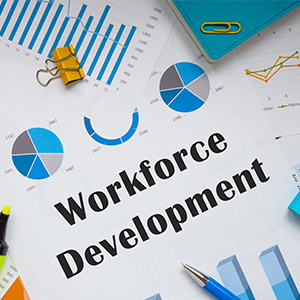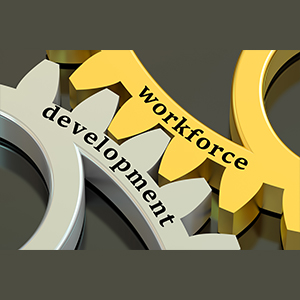The Impact Of RPL On Workforce Development
 In a rapidly changing job market, the demand for skilled workers is ever-increasing. Companies need employees who can adapt quickly to new technologies and processes. This is where Recognition of Prior Learning (RPL) comes into play. RPL allows individuals to get credit for their existing knowledge and skills, making it easier for them to upskill or reskill for new roles. But how exactly does RPL influence workforce development? Let's discuss this in this article.
In a rapidly changing job market, the demand for skilled workers is ever-increasing. Companies need employees who can adapt quickly to new technologies and processes. This is where Recognition of Prior Learning (RPL) comes into play. RPL allows individuals to get credit for their existing knowledge and skills, making it easier for them to upskill or reskill for new roles. But how exactly does RPL influence workforce development? Let's discuss this in this article.
Bridging Skill Gaps
One of the biggest challenges employers face is finding candidates with the right mix of skills. There's often a mismatch between the qualifications job seekers possess and what companies require. RPL helps bridge this skill gap by validating the competencies people have acquired through non-formal or informal learning channels.
For instance, someone may have extensive on-the-job training in a particular software program but lack an official credential. By earning a nationally recognised RPL qualification through Skills Certified or others, their skills get formally recognized, allowing them to qualify for roles demanding that expertise. This talent pipeline addresses crucial shortages across different sectors.
Enhancing Career Mobility
The workforce today is mobile, with professionals frequently changing jobs or even entire careers. RPL smoothens these transitions by acknowledging existing capabilities. It eliminates the need to start over from scratch when moving into a new field.
Consider a marketing professional wanting to shift to a human resources role. Their skills in areas like communication, data analysis, and stakeholder management would likely earn credit via RPL pathways. This accelerates their progress in the new HR career track.
RPL empowers workers to explore opportunities aligning better with their evolving interests and strengths. It instills confidence, knowing prior efforts won't go to waste.
Upskilling Made Efficient
When upskilling, workers often repeat training in areas they're already proficient in - an inefficient use of time and resources. RPL assessments identify knowledge gaps so training can directly target those deficit areas.
If an IT professional has extensive cloud computing experience but limited cybersecurity skills, RPL will map out their exact learning needs in that domain. Focused, tailored upskilling is more cost-effective for both the employee and employer.
Furthermore, workers feel motivated to keep developing competencies, knowing that their existing skills and expertise will be recognized for future career growth.
 Improving Access And Inclusion
Improving Access And Inclusion
An RPL program democratizes access to educational and employ- ment pathways for underrepresented groups. Many face systemic barriers that restrict their ability to gain formal qualifications despite possessing substantial practical know-how.
By valuing experiential learning, RPL creates alternate credentialing routes for individuals from disadvantaged backgrounds. This inclusivity cultivates a diverse talent pool reflecting the population's rich knowledge base.
RPL is especially powerful for groups like immigrants, Indigenous peoples, refugees, and those changing careers later in life. It presents opportunities earlier denied due to a lack of conventional academic credentials.
Nurturing A Culture Of Lifelong Learning
In this era of rapid technological disruption, the "learn for life" mentality is paramount for workforce success. An RPL program nurtures an environment where continuous upskilling and reskilling become the norm.
When workers realize their current competencies can expedite future educational journeys through RPL processes, they feel encouraged to constantly expand their skill sets. This proactive mindset boosts an organization's ability to adapt and thrive amidst market shifts.
A supportive RPL ecosystem signals to employees that their knowledge acquisition efforts, both formal and informal, are valued assets by the company. The workplace evolves into a space for perpetual learning and growth.
So, could RPL be the driving force transforming workforce development? Signs point to a resounding yes. Let's explore the key benefits in greater detail.
Boosting Employee Retention
High employee turnover proves costly for organizations. Constantly sourcing, hiring, and training new staff drains resources and productivity. RPL enhances retention by creating a positive workplace experience.
Workers feel their skills and knowledge are respected when RPL enables accelerated qualification or role progression pathways. They appreciate employers investing in their professional development through recognition of prior learning.
This nurturing environment cultivates loyalty, with engaged employees sticking around longer. Companies can focus more resources on upskilling their existing workforce through tailored RPL-guided programs.
Developing Future-Ready Talent
The escalating pace of technological change means today's cutting-edge skills rapidly become outdated. Developing a future-proof workforce requires instilling adaptability - the ability to constantly refresh knowledge and reskill as needed.
RPL plays a pivotal role in cultivating this resilient mindset. When individuals see their existing expertise provides a springboard for new learning, they become open to perpetual reskilling cycles.
Instead of rigid one-off training approaches, RPL enables personalized skills pathways that evolve with market demands. Workers can strategically bridge knowledge gaps while building on existing foundations through recognition processes.
Fostering this responsive, agile talent pipeline positions companies to thrive amidst industry disruptions. They can nimbly redeploy and reskill their workforce to align with emerging opportunities.
Strengthening Industry Partnerships
RPL facilitates collaborative relationships between employers, education providers, and professional bodies. These cross-sector partnerships are key to developing robust workforce capabilities.
For instance, companies can partner with vocational colleges to design RPL assessments evaluating employees' job-based competencies. Recognized skills then get formally credited towards relevant qualifications.
This symbiotic relationship benefits all stakeholders. Employees earn portable academic credentials, education providers expand their reach, and employers build a more highly skilled workforce tied to industry needs.
Such partnerships ensure training aligns tightly with workplace realities. RPL processes provide a feedback loop informing curriculum design based on current competency benchmarks.
Concluding Thoughts
Recognition of Prior Learning is emerging as a powerful catalyst shaping the future workforce. Its holistic approach to skills development can bridge employment gaps, enable lifelong learning, and cultivate thriving industry-aligned talent pipelines.
By fully embracing RPL's possibilities, organizations can position themselves at the forefront of workplace capability building. An empowered, future-ready workforce provides a clear competitive edge for excelling in today's dynamic economy.

